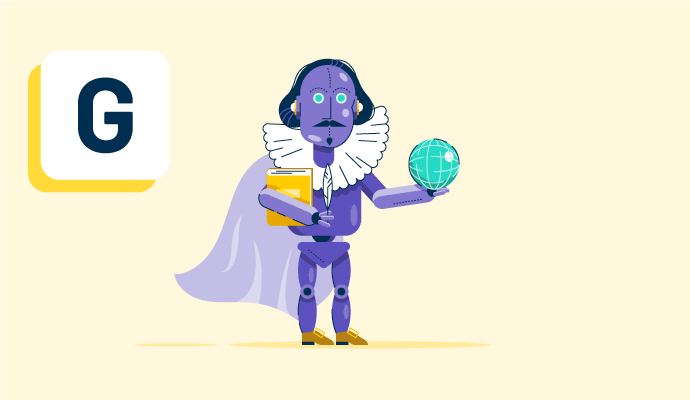What is GPT-3?
Third-generation Generative Pre-trained Transformer (GPT-3) is a language model that uses deep learning to generate all kinds of text. Open AI’s much-talked about model GPT-3 requires a small amount of input text to create large volumes of relevant machine-generated text.
GPT-3 processes text inputs to perform natural language tasks. It uses natural language generation (NLG) and natural language processing (NLP) to understand and produce natural human language text.
In earlier years, it was extremely challenging for machines to generate content understandable to people because they couldn’t understand the complexity and nuances of human language. GPT-3 has been a game changer as it has learned to create poetry, articles, news reports, stories, and dialogue using a small amount of input text.
Modern businesses leverage GPT-3 to write programming codes, build effective chatbots, or create AI-powered software applications.
How GPT-3 works
GPT-3 is a language prediction model with a neural network machine learning model. Here’s how it works.
- Receives input text and transforms it. GPT-3 changes input text into the most useful result. This is achieved by training the system to understand large volumes of internet text to spot patterns in a generic pre-training process.
- Trains on several data sets. GPT-3 was trained on several data sets with websites like WebText2, Common Crawl, and Wikipedia.
- Tests are performed. GPT-3 has been trained through a supervised testing phase followed by a reinforcement phase.
- Practices with language trainers. A team of trainers asks the language model a question with a correct output in mind. If the model gives an incorrect answer, the trainers tweak the model to teach it the correct one. The model is taught to provide several answers, which trainers rank from best to worst.
GPT-3 has more than 175 billion machine-learning parameters. It’s significantly larger than its previous models, such as Bidirectional Encoder Representations from Transformers (BERT) and Turing NLG.
GPT-3 uses
Organizations use GPT-3 for a variety of purposes. It creates a workable code, clones websites, or generates text that resembles human-written language. Some of the most popular uses of GPT-3 include:
- Creating written content. GPT-3 helps businesses create quizzes, memes, recipes, blogs, comic strips, advertising copies, and anything that involves text.
- Composing music. GPT-3 can help musicians make new work.
- Automating conversation. GPT-3 can respond to any text that a person sends with a new text appropriate to the context.
- Translating text. GPT-3 translates text into programmatic commands and vice versa.
- Analyzing sentiments. GPT-3 is well-equipped to analyze sentiment and extract actionable information.
- Summarizing text. GPT-3 summarizes text to bring out the same meaning with fewer words.
- Translating programming languages. GPT-3 translates one programming language to another, helping developers solve complex engineering problems.
GPT-3 benefits
GPT-3 provides a good solution whenever a large amount of text needs to be generated based on a small amount of text input. GPT-3 is able to provide decent outputs given a handful of training examples.
Following are some of the further benefits of GPT-3:
- It has a wide array of artificial intelligence (AI) applications. It’s task-agnostic; it can perform a wide bandwidth of tasks without fine-tuning.
- Like any other automation technology, GPT-3 handles quick, repetitive tasks.
- It enables humans to manage more complex tasks that require a higher degree of critical thinking.
- In many situations, it isn’t practical or feasible for humans to generate text output. For example, customer service chatbots or centers can use GPT-3 to answer client questions.
- Sales teams can use it to connect with potential customers, and marketing teams can write copy. This type of content needs fast production and comes with low risk. This means the consequences are relatively minor if the copy has mistakes.
-
One of the crucial benefits of GPT-3 is that it is lightweight and can run on a consumer laptop or smartphone.
GPT-3 best practices
Businesses leverage the power of GPT-3 to reduce costs, enhance their customer support processes, and reduce employee workload. It offers end-to-end solutions, from development to training to integration.
Some of the best practices for GPT-3 are mentioned below:
- Establish clear objectives. Businesses should define objectives and the scope of the system before implementing GPT-3.
- Train and monitor the system. GPT-3 needs training to ensure accuracy, efficiency, and effectiveness. Regular monitoring s important to identify and correct any inaccuracies or errors.
- Implement robust data privacy measures. Businesses have to set up robust data privacy measures to ensure security.
- Provide human oversight. Despite the benefits of automation, human supervision is necessary to make sure that the system operates effectively and provides accurate responses to customer queries.
GPT-3 vs. GPT-4
GPT-3 and GPT-4 are AI-based models that use deep learning algorithms and NLP to process human language. Compared to GPT-3, GPT-4 performs better but takes longer to respond than GPT-3. GPT-4 has a broader knowledge base, which could significantly advance the ability to process and analyze human language.
GPT-4 is much larger than GPT-3, as GPT-4 has 10 trillion parameters compared to GPT-3’s 175 billion parameters. GPT-4 can process and analyze more information, leading to more accurate responses.
Learn more about natural language understanding and why it’s so critical to software.

Sagar Joshi
Sagar Joshi is a former content marketing specialist at G2 in India. He is an engineer with a keen interest in data analytics and cybersecurity. He writes about topics related to them. You can find him reading books, learning a new language, or playing pool in his free time.

